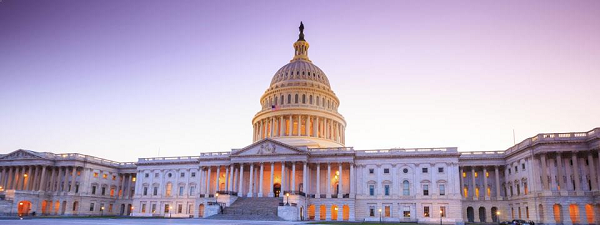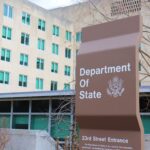USCIS is an agency in crisis, recently citing the COVID-19 pandemic as the cause of a “dramatic decrease in revenue,” which may require furlough of thousands of employees as soon as August 3 if it does not receive its requested $1.2 billion from Congress.
Even as the volume of new filings has decreased significantly over the past two years, case processing times have increased substantially, with applications being processed 46 percent slower. This, too, is no surprise given USCIS’s misallocation of worker resources, exacerbating its own backlog, which was already close to 200,000 when this Administration took office. In October 2019, for example, applicants started receiving rejections of asylum applications, among others, for failing to write “None” or “N/A” in response to questions on the application form that did not apply to them. For example, an asylum applicant with only one sibling, who did not write “None” or “N/A” in the blank boxes listing second, third, and fourth sibling names, would receive a Notice of Deficiency or rejection that would not arrive until 6-8 weeks after the original filing was sent. In response to a call for examples by the American Immigration Lawyers Association, of the 189 rejected applications analyzed, 28 were rejected for not having a middle name, 20 for no other names used, 64 for not having a passport or travel document (I-94) number, 46 for incomplete family information, and 51 for not writing their name in their native language, even though in many instances their native language used the same alphabet as English.
The typical asylum applicant, undeterred given her fear of persecution in her home country, is then going to add the arbitrary “None” and “N/A” responses and then file the application again. Thus, the agency’s strategy, likely to deter asylum applications (as this Administration has attempted to do on almost every level through case law and regulatory changes), is undermined, the applicant’s case is significantly delayed, and the agency’s backlog is exacerbated as it must review the same application yet again. Recently, one attorney had an asylum application rejected because he wrote the asylum seeker’s name and identification number in pen, rather than pencil, on the back of the required passport photo of his client that accompanied the application. Though the instructions do state to use pencil on passport photos, is such a rejection a good use of this agency-in-crisis’s bureaucratic time and resources? This not only costs USCIS money in sending the entire package back to the applicant, but also results in USCIS having to process the same application a second time, when the reason for rejection had absolutely no bearing on the merits of the claim or the ability of the agency to review and adjudicate the application.
USCIS has continued this trend of irrational inflexibility in its response to the COVID-19 pandemic and its reopening policies for its asylum offices, which will undoubtedly yield even further dysfunction and ballooning backlogs to this “agency-in-crisis.” USCIS asylum offices opened up, after June 4, to conduct asylum interviews. These interviews require applicants to appear in person at the 8 asylum offices nationwide (which means that applicants who don’t happen to live in Arlington, VA, New York, Miami, Chicago, Los Angeles, Newark, Houston, or San Francisco must travel sometimes great distances to attend in person). Attorneys and interpreters also must appear in person. According to communications from USCIS asylum offices, the applicant, the interpreter, and the attorney will each sit in separate rooms from the asylum officer, who will conduct the interview using video technology. This means four different rooms for one asylum interview, with all four people communicating by video. Any dependent applicants on the claim, including the asylum applicant’s spouse and children who were under the age of 21 at the time the application was filed, must also be present and must wait in the waiting room for the duration of the interview, which can take several hours.
USCIS insists that in person appearances are necessary because they need to confirm the applicant’s identity via an in-person photograph and fingerprinting upon arrival for the interview. It is also apparently not possible to have the attorney and interpreter (who do not need to be photographed and fingerprinted upon arrival) appear remotely, despite the use of video technology during this “in person” interview already. In addition to presenting asylum applicants with an impossible choice – appear for the interview after waiting 3-5 years for the opportunity to present her claim while potentially endangering her and her family’s health, or delay the application even longer by requesting to reschedule the interview until it is safer to appear in person – this policy again unnecessarily misallocates limited agency resources, requiring the use of multiple rooms for a single interview. This results in significantly fewer interviews per day (the San Francisco Asylum Office has announced it will be doing one asylum interview per day), and contributing to the asylum offices’ already extensive backlog of un-adjudicated applications. The Agency should instead think carefully, if they plan to conduct the asylum interviews by video (with all of the potential concerns around credibility and communication that entails), about permitting asylum seekers, their attorneys, and their interpreters, to appear for their interviews, wherever technology permits, from their homes.
This Administration has an opportunity to respond to this pandemic with integrity, and to do what needs to be done for USCIS to protect the tens of thousands of hard working USCIS staff from further furloughs and layoffs. But blaming its budget shortfall on a global pandemic is not the place to start. A 1.2 billion dollar band–aid will not fix an agency that is in crisis because of this administration’s anti-immigrant policies and the agency’s own mismanagement. We, as citizens, leaders, and congressional representatives, need to hold USCIS and the Department of Homeland Security accountable.







